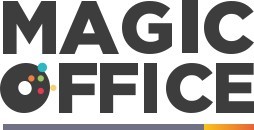
Defining the Cost Performance Index
Cost Performance Index Demystified
In the realm of project management, particularly within the Arabian Emirates, the Cost Performance Index (CPI) serves as a pivotal metric. This tool is essential for managers striving to ensure that projects are executed efficiently and within the constraints of both time and budget. At its core, CPI provides a quantifiable measure of cost efficiency by comparing the earned actual costs against planned expenditures. In essence, it indicates the project's cost efficiency by determining how well the actual costs align with those that were budgeted.
The formula for calculating CPI is straightforward: divide the earned value by the actual cost. If the CPI is greater than 1, the project is considered under budget, which signifies a favorable efficiency – a metric every project manager aspires to achieve. Conversely, a CPI less than 1 suggests that the project is over budget, reflecting areas needing improvement.
Understanding CPI, however, requires more than just knowledge of its formula. Enhancing project managers' expertise involves recognizing its role alongside the Schedule Performance Index (SPI) in forming a comprehensive perspective on project performance. This dual assessment aids managers in not just gauging cost efficiency, but also in ensuring work is performed within the set schedule, thereby supporting holistic project management objectives.
In upcoming discussions, we'll delve deeper into the integral role of CPI in project performance, the challenges faced in its implementation in the Arabian Emirates, and strategies for its effective utilization. These insights provide project managers with essential tools to enhance efficiency and keep projects aligned with their financial goals. Moreover, by examining case studies and future trends, leaders can further appreciate the importance of consistent, accurate management of their project budgets.
The Role of CPI in Project Management
Enhancing Project Management with Cost Performance Index
Integrating the Cost Performance Index (CPI) into project management emerges as a pivotal strategy for managers in Arabian Emirate companies. This index serves as a crucial benchmark, offering clear insights into the financial health of a project, enabling project managers to adjust strategies effectively. CPI, a performance index that measures cost efficiency towards the work performed, essentially compares the earned value of work accomplished against the actual costs incurred. This evaluation reveals whether a project is running according to budget or if any adjustments are necessary. It indicates project efficiency in terms of cost versus schedule performance. Project managers with PMP certification often leverage CPI to maintain a balance between the project schedule and the budget, ensuring cost efficiency without compromising the timeline. A perfect CPI value (greater than one) signals that the budgeted cost aligns favorably with the actual costs and the efficiency project is on track. Incorporating CPI in project management also involves its interaction with the Schedule Performance Index (SPI). By using both indicators, managers can gain a comprehensive view of both time and budget, allowing them to make informed and timely decisions that steer the project towards success. For those seeking to amplify their project management skills and understanding of CPI utilization, studying for the PMP exam can be a beneficial step. The certification covers methodologies that enhance proficiency in balancing actual cost and earned value performance index. Arabian Emirate companies looking to optimize their project management practices will find tools such as CPI indispensable. By understanding what CPI reveals about project performance and integrating it into their management processes, they can achieve higher levels of project efficiency and success. For an additional edge in project management and cost performance, consider exploring strategies that enhance CPI usage crafting effective email designs for financial institutions as it offers insights into planning and executing projects with a cost-effective approach.Challenges in Implementing CPI in the Arabian Emirates
Overcoming Barriers to Successful CPI Implementation
Implementing the Cost Performance Index (CPI) in the Arabian Emirates' project management landscape is not without its challenges. These challenges often arise from a combination of cultural, procedural, and structural factors that can impede the effective utilization of this performance index.
One significant challenge is ensuring that all project managers and stakeholders have a shared understanding of what CPI represents and how it can impact their projects. Misinterpretation of the index can lead to misguided decisions regarding project budget and schedule performance, affecting overall cost efficiency. Additionally, the absence of consistent training and certification opportunities like the PMP certification can result in varied levels of proficiency in calculating and applying CPI effectively.
Another barrier is the intrinsic complexity of integrating a new performance index amidst existing project management tools. For managers accustomed to traditional methods, adapting to insights drawn from CPI may require a shift in mindset and workflow. There is also the critical need for precise data collection; without accurate earned value data reflecting costs work, the index becomes unreliable and fails to provide true insights into project efficiency.
Moreover, cultural nuances in the Arabian Emirates can influence management styles, with some managers potentially viewing CPI as an overt critique of their management efficiency rather than a tool for improvement. Such perceptions can hinder open communication and willingness to embrace the index as part of routine project performance assessments.
Finally, achieving consensus on using CPI as a standardized metric across various projects and sectors also poses a challenge. The variability in project types—from infrastructure to technology—demands adaptable yet consistent measures of performance, which requires ongoing collaboration and commitment from all parties involved.
Strategies for Effective CPI Utilization
Optimizing Resources and Tools for Effective Implementation
Maximizing the value of the Cost Performance Index (CPI) within Arabian Emirate companies requires strategic approaches tailored for the region's unique business landscape. Given the significance of CPI in evaluating project cost efficiency, it's crucial to integrate resources and tools that enhance its application in project management.
Effective CPI utilization involves collaboration between project managers and their teams to ensure that the planned budget aligns with actual expenditures. This collaboration facilitates in identifying cost work and earned values early on, allowing managers to adjust strategies proactively. Employ project management software that provides real-time insights into both actual cost and budgeted cost, thus offering a holistic view of performance metrics and aiding decision making.
Project managers should also prioritize training and development initiatives that focus on enhancing knowledge about schedule performance and cost performance. Enrolling in PMP certification courses, which encompass modules on CPI and its role in project management, can vastly improve managers' competency and efficiency in managing resources.
Additionally, establishing a routine evaluation using both the CPI and the Schedule Performance Index (SPI) allows companies to measure how well resources are being allocated against the planned schedule. This indicates project performance relative to the project budget, enabling managers to optimize work performed while ensuring the project adheres to its time constraints.
By elevating the proficiency of project managers through targeted education and leveraging advanced management tools, Arabian Emirate companies can drive optimal project outcomes and ensure that the performance index remains a reliable gauge of both cost efficiency and project success.













